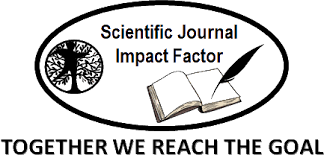RELIGIOUS MOTIFS IN THE GRIMMS’ FAIRY TALES
DOI:
https://doi.org/10.58885/ijllis.v12i4.34mbAbstract
Gutenberg or Luther’s Bible (1534) and the fairy tales of the brothers Jacob and Wilhelm Grimm, titled Kinder- und Hausmärchen (Children’s and Household Tales, 1812), are included in the UNESCO World Heritage List (2005). In the process of literary reception, the collection of 210 fairy tales received the popular name of Grimms’ Fairy Tales, from the first publication in 1812, and in the international space and literary science and folkloristics also the acronym KHM (Kinder- und Hausmärchen). The Brothers Grimm were brought up in the spirit of the Protestant ethic and used religious motifs, motif fragments and blind motifs and values (e.g. purity, diligence, duty, honesty, order and care) in legends, sagas (Doctor Luther at the Wartburg, 1521) and fairy tales, e.g., in Cinderella (asceticism), Little Red Riding Hood (decency), Snow White (mastery), The Frog King (duty). Criticism of the Pope can also be found, namely in the fairy tale The Fisherman and His Wife, in which, among others, the topic of the male or female Pope is discussed.
Keywords: Grimm Brothers, fairy tale, Bible, folklore, ATU, motifs, values in fairy tales, etc.
References
Apuleius, Lucius. 1981. Metamorfoze ali Zlati osel. Ljubljana: Cankarjeva založba.
Bedenk, Kasilda. 2013. »Der Lebenswandel einer Mircheniibersetzung unter phraseologischem Aspekt: am Beispiel von Grimms Mirchens 'Hans imGliick'.« Knjižnica 57 (1): 135-63.
Bedenk, Kasilda, in Milena Mileva Blažič. 2018. Pravljice bratov Grimm: od prvotne rokopisne zbirke iz leta 1810 do recepcije na Slovenskem. Ljubljana: Pedagoška fakulteta.
BLAŽIČ, Milena Mileva, 2017: Folktale's intertextuality in Svetlana Makarovič's Svetlana' fairy tales. Marjetka Golež Kaučič (ur.): What to do with folklore? New perspectives on folklore research. Trier: Wissenschaftlicher.
BLAŽIČ, Milena Mileva, 2018: Kosovelov rokopisni prevod Andersenovih pravljic. Urška Perenič, Aleksander Bjelčevič (ur.): Starejši mediji slovenske književnosti: rokopisi in tiski. Obdobja 37. Ljubljana: Znanstvena založba Filozofske fakultete. 73-79.
BLAŽIČ, Milena Mileva, 2019: Medkulturnost v pravljicah Dorotheae Viehmann, Laure Gonzenbach in Tine Vajtove ob primeru pravljic o začarani nevesti (ATU 402). Studia mythologica Slavica 22. 163-173.
BLAŽIČ, Milena Mileva, 2021: Vloga Filozofske fakultete pri razvijanju mladinske književnosti 1919-2019. Katja Mahnič idr. (ur.): Vloga humanistike in družboslovja v 21. stoletju. 100 let FF UL, 1919-2019. Ljubljana: Znanstvena založba Filozofske fakultete. 267-270.
BLAŽIČ, Milena Mileva, BEDENK, Kasilda, 2019: Govorjeni jezik v pravljicah: na primeru rezijanske pravljičarke Tine Wajtawe. Hotimir Tivadar (ur.): Slovenski javni govor in jezikovno-kulturna (samo)zavest. Obdobja 38. Ljubljana: Znanstvena založba Filozofske fakultete. 279-287.
BLAŽIČ, Milena Mileva, ZIMMERMANN, Angelika, 2020: Comparative analysis of memoirs of H. Kottanner and E. Jelovšek with S. Žižek's article. Social'nye i gumanitarnye nauki: teorič i praktika l. 20-33.
Blažić, M. M., & Iseni, A. (2023). SLOVENIAN FAIRY TALES IN EUROPEAN CONTEXT. International Journal of Social Sciences & Humanities, 8(2), 9–20. Retrieved from http://ijssh.ielas.org/index.php/ijssh/article/view/61
Blazic, M. M., & Tembra, J. V. (2017). The Slovene trilogy Alice in Crazyland by Evald Flisar. Angloamericanae Journal, 1(1), 85-103.
Briefwechsel der Briider Grimm. http://www.grimmbriefwechsel.de/service/pers/pers.html
Grimm, Jakob, in Wilhelm Grimm. 1993. Pravljice 1. Prevod Polonca Kovač. Ljubljana: Mladinska knjiga.
Grimm, Jakob, in Wilhelm Grimm. 1997. Pravljice 2. Prevod Polonca Kovač. Ljubljana: Mladinska knjiga.
Juvan, Marko. 2000. Intertekstualnost. Ljubljana: ZRC SAZU.
Križnik, Gašper. Od sowčne zvezde. ŠZ 56. Arhiv ISN. Ljubljana: Inštitut za slovenskonarodopisje ZRC SAZU.
Kropej, Monika. 2008. »Pravljice v rokopisni zapuščini Gašperja Križnika.« V GašperKrižnik (1848 -1904) in njegov čas, ur. Marija Stanonik, 161-75. Ljubljana: ZaložbaZRC, ZRC SAZU.
Kropej, Monika. »Jernej Kopitar, Vuk Karadžič in brata Grimm.« Knjižnica 57 (1): 87-101.
Kropej, Monika. »The Cooperation of Jacob Grimm, Jernej Kopitar, and Vuk Karadžič during the Period of National Awakening in Europe.« Studia Mythologica Slavica 16:215-31.
Kropej, Monika. 2015. Tipni indeks slovenskih pravljic. Živalske pravljice in basni. Ljubljana: ZRCSAZU Ljubljana.
Luthi, Max. 2011. Evropska pravljica: forma in narava. Ljubljana: Sophia.
Milčinski, Fran, in Ivan Vavpotič. 1917. Tolovaj Mataj in druge slovenske pravljice. Ljubljana: Tiskovna zadruga.
Miller, Alice. 2005. The Body Never Lies: The Lingering Efjects of Cruel Parenting. NewYork: W. W. Norton 8x Company.
Peklaj, Marijan. 2007. Eksegeza in teologija stare zaveze: izbrana poglavja. Ljubljana: samozal.
Uther, Hans-Jorg. (2004) 2011. The Types of International Folktales: A Classification and Bibliography, Based on the System of Antti Aarne and Stith Thompson 1-3. Helsinki: Suomalainen Tiedeakatemia — Academia Scientiarum Fennica.
Uther, Hans-Jorg. (2008) 2013. Handbuch zu den »Kinder- und Hausmčirchen« der Briider Grimm Entstehung - Wirkung - Interpretation. Berlin: De Gruyter.
Valenčič Arh, Urška, in Darko Čuden, ur. 2015. V labirintu jezika. Ljubljana: Znanstvena založba Filozofske fakultete.
Zipes, Jack. 2006. Why Fairy Tales Stick: The Evolution and Relevance of a Genre. NewYork/London: Routlege.
Zipes, Jack. 2012. The Irresistible Fairy Tale: The Cultural and Social History ofa Genre. Princeton/Oxford: Princeton University Press.
Zipes, Jack. »Childism and the Grimms' Fairy Tales or How We Have Happily Rationalized Child Abuse through Storytelling.« Dostop 15. aprila 2018. https://www.academia.edu/6192577/ Childism and Grimms' Tales.
Zipes, Jack. 2013b. The Golden Age of Folk and Fairy Tales. Indianapolis: Hackett Publishing.
Downloads
Published
How to Cite
Issue
Section
License
Declaration/Copyright transfer:
1. In consideration of the undertaking set out in paragraph 2, and upon acceptance by ANGLISTICUM for publication of the manuscript in the Journal, I/We hereby assign and transfer publication rights to ANGLISTICUM, whereas I/We retain the copyright for the manuscript. This assignment provides ANGLISTICUM the sole right and responsibility to publish the manuscript in its printed and online version, and/or in other media formats.
2. In consideration of this assignment, ANGLISTICUM hereby undertakes to prepare and publish the manuscript in the Journal, subject only to its right to refuse publication if there is a breach of the Author’s warranty in paragraph 4 or if there are other reasonable grounds.
3. Editors and the editorial board of ANGLISTICUM are empowered to make such editorial changes as may be necessary to make the Manuscript suitable for publication.
4. I/We hereby acknowledge that: (a) The manuscript submitted is an original work and that I/We participated in the work substantively and thus I/We hereby are prepared to take public responsibility for the work; (b) I/We hereby have seen and approved the manuscript as submitted and that the manuscript has not either been published, submitted or considered for publication elsewhere; (c) The text, illustration, and any other materials included in the manuscript do not infringe upon any existing copyright or other rights of anyone.
5. I/We hereby indemnify ANGLISTICUM and the respective Editors of the Journal as mentioned in paragraph 3, and hold them harmless from any loss, expense or damage occasioned by a claim or suit by a third party for copyright infringement, or any suit arising out of any breach of the foregoing warranties as a result of publication of the manuscript.













